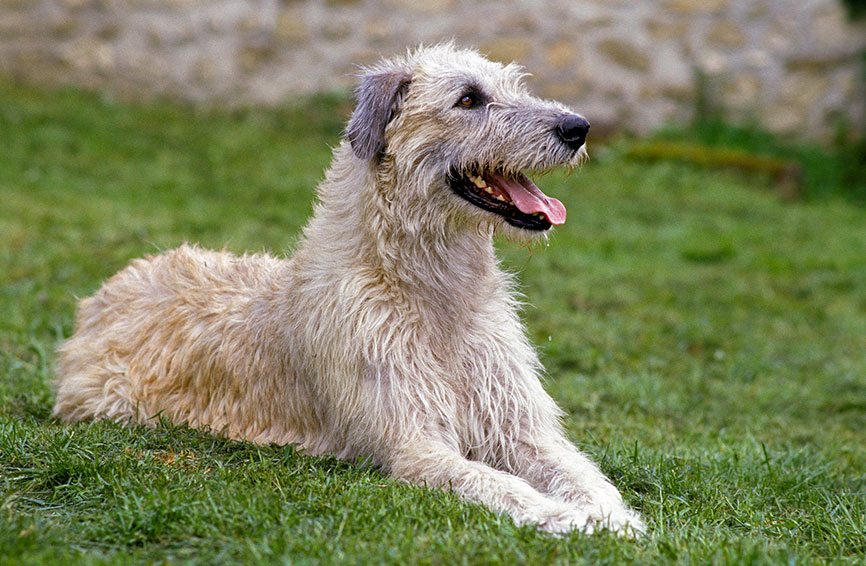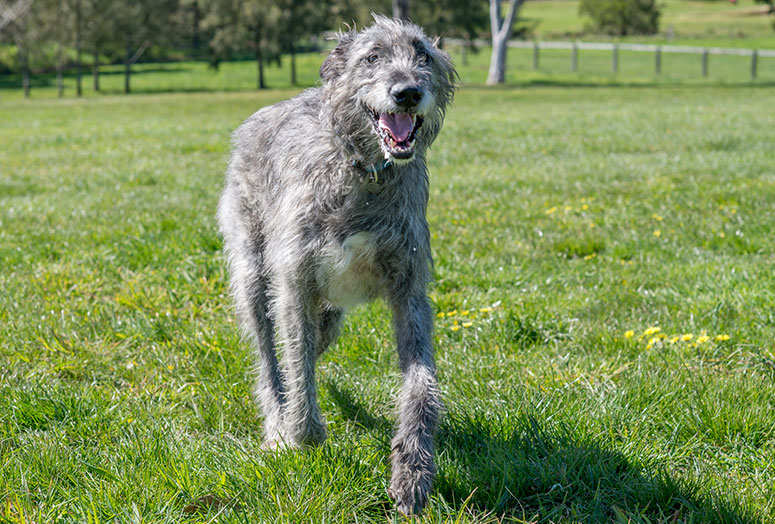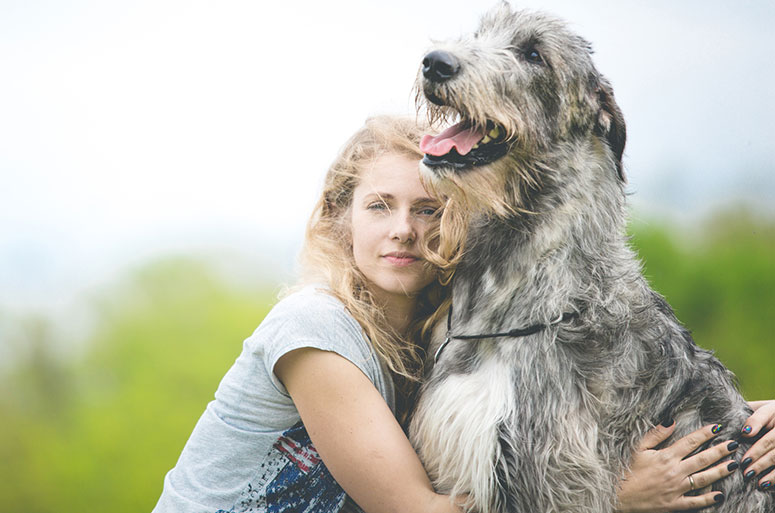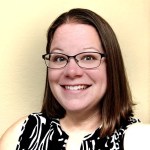Table of Contents
Introduction to Irish Wolfhounds
Irish wolfhounds are courageous and dignified dogs that are exceptionally tall and agreeable. Many people love these dogs because of how calm and serene they are. These large hound dogs are fast runners and make great family dogs because of how well they do around kids. Although Irish wolfhounds were originally bred to hunt big game, they mostly live in loving households today and are very affectionate with those they love.
You can learn more about the Irish wolfhound breed in this Healthy Paws breed guide to determine whether this is the right type of dog for your home and lifestyle.
Size of Irish Wolfhounds
One of the most remarkable things about the Irish wolfhound is its size. Male Irish wolfhounds often weigh 140-160 pounds and stand nearly 36 inches tall at the shoulder, while females are closer to 130 pounds and 33 inches tall. However, adult dogs can weigh as much as 185 pounds. These dogs typically stop growing by about two years of age.
Here’s how big you can expect your Irish wolfhound to get as the dog grows from puppyhood to adulthood:
| Weight Chart | 3 months | 6 months | 10 months | 12 months | 24 months |
| Average male Irish wolfhound weight | 44.7 lbs. | 98.3 lbs. | 129.7 lbs. | 136 lbs. | 149.8 lbs. |
| Average female Irish wolfhound weight | 41.7 lbs. | 87.2 lbs. | 114.8 lbs. | 120 lbs. | 129 lbs. |
Characteristics of Irish Wolfhounds
Irish wolfhounds are gentle giants that usually get along with kids and pets while having moderate exercise needs. These intelligent dogs are easy to train and require regular grooming to prevent mats and tangles. The typical personality of an Irish wolfhound is sensitive, responsive, and alert. Most Irish wolfhounds love being around people, and Irish wolfhounds are not great guard dogs because they are too friendly with strangers. They also don’t respond well to harsh words or punishments, and they require plenty of space to move around and exercise.
As you get to know an Irish wolfhound’s personality, here’s what you can expect based on his or her breed characteristics:
| Breed Characteristic | Level (High, Medium, Low) |
| Affectionate with People | High |
| Good with Kids | High |
| Good with Pets | High |
| Need for Exercise | Medium |
| Energy Level | Low |
| Intelligence Level | High |
| Able to Be Trained | Medium |
| Amount of Barking | Low |
| Amount of Shedding | Medium |
History of Irish Wolfhounds
As their name suggests, the history of the Irish wolfhound is tied to Ireland. However, their breeding involves mixing large dogs of Britain and Middle Eastern coursing hounds. The hounds were well-established in the British Isles during the Roman Empire, and records show that a Roman consul received seven of them in the year 391. Bred to be hunting dogs, they gained a reputation for being “gentle when stroked but fierce when provoked.” Therefore, they were used to hunt large Irish elks, wolves, and other big-game animals. Only kings and nobles owned Irish wolfhounds back then, and they were prized gifts exchanged among rulers and other important people.
George Augustus Graham, a British army captain, worked to protect and promote the breed in the mid-1800s after it nearly became extinct. Major H.D. Richardson wrote a book that addressed the breed’s lineage and began breeding them. The American Kennel Club registered its first Irish wolfhound in 1897, and the breed enthusiasts founded the Irish Wolfhound Club of America in 1927.
Irish Wolfhounds Standard Information
Irish wolfhounds are compared to each other at dog shows and competitions, based on a breed standard that the parent breed club and other national or international organizations accept. For example, these dogs are the tallest and largest of the galloping hounds, rough-coated, and gracefully built.
Here is an overview of the breed standard information for Irish wolfhounds:
Head:
- Long head with a skull that is not too broad
- Long and moderately pointed muzzle
- Small and greyhound-like ears
Neck, Topline, Body:
- Long, strong, and muscular neck
- Very deep chest and wide breast
- Back is rather long than short
- Belly is well drawn up
Forequarters:
- Shoulders are muscular
- Elbows are well under and neither turned inward nor outward
- Legs are strong and relatively straight
Hindquarters:
- Muscular thighs
- Hocks well let down
- Moderately large and round feet
- Toes are well-arched and closed
- Nails are very strong and curved
Coat:
- Rough and hard hair on body, legs, and head
- Wiry and long over the eyes and underjaw
Color:
- Gray, brindle, red, black, white, or fawn
- Any other color that appears in the deerhound is also acceptable
Caring for Irish Wolfhounds
Although Irish wolfhounds are gentle and easygoing, they still require plenty of care and attention. These dogs need at least an hour of exercise daily and do best in homes with a fenced yard where they can stretch their legs and move around.
Here are some general tips for taking the best care of an Irish wolfhound:
Best Living Environments:
- Not good apartment dogs
- Homes should be large enough for the dog and have an outdoor area
Type of Exercise:
- At least one hour of exercise per day
- Adult dogs make great running partners
- Hiking with family members
- Plenty of time moving around in a fenced yard
Mental Enrichment:
- Time outdoors with favorite humans
- Promote exercise to prevent digging and chewing
- Try obedience training and interactive dog toys
- Consider search and rescue jobs and dog sports
Training Strategies:
- These dogs have a strong prey drive
- Can be “couch potato” dogs, so you may need to coax them to exercise
- Eager to please and learn
- Start training early to prevent this large dog from becoming too dominant
- Sensitive dogs that require patience and positive reinforcement
Grooming Tips:
- Moderate amount of shedding
- Does not have seasonal shedding periods
- Brush at least weekly to remove debris and dead fur
- Bathe every one to two months
- Check ears for dirt and infection
- Trim nails monthly if not worn down outdoors
Common Health Problems of Irish Wolfhounds
Irish wolfhounds and other deep-chested, large dog breeds often experience bloat, an abdominal swelling that can be life-threatening. If you purchase your Irish wolfhound from a breeder, ensure that the breeder has screened their dogs for genetic and health conditions, including a liver shunt, cancer, heart disease, and pneumonia. The national breed club for Irish wolfhounds recommends the following health tests: hip evaluation, elbow evaluation, serum bile acids, cardiac exam, and ophthalmologist evaluation.
These are some of the most common health issues that arise with Irish wolfhounds:
- Hip dysplasia
- Elbow dysplasia
- Osteochondritis dissecans (painful joint disorder)
- Osteosarcoma (bone cancer)
- Fibrocartilaginous embolic myelopathy (can cause hind leg paralysis)
- Liver shunt
- Heart disease
- Hypothyroidism
- Progressive retinal atrophy
- Bloat
Diet and Nutrition for Irish Wolfhounds
Since Irish wolfhounds are large dogs, they will need approximately four to eight cups of dry dog food per day. Your dog’s age, size, level of activity, and metabolism, as well as the caloric density of your dog’s food, will dictate the required amount. Ask your vet for a specific recommendation. Break the total amount of food for your dog into two or three daily meals to reduce the risk of bloat.
Where to Adopt or Purchase Irish Wolfhounds
The Irish Wolfhound Club of America is the national breed club for this type of dog and offers a breeder director, general information, and a national rescue directory. On this directory, you can find organizations led by rescue volunteers committed to finding permanent homes for Irish wolfhounds needing adoption. If you wish to adopt a pet, you can also contact your local humane society or search for rescue groups in your area.
Related Breeds
If a gentle giant of a dog is what you are looking for, the Irish wolfhound is an excellent choice. However, there are other similar and related breeds that you might also consider before making the big decision to purchase or adopt a new pet, including these:
- Great Dane
- Afghan hound
- Borzoi
- Scottish Deerhound
- Greyhound
- Tibetan wolfdog
Pet Insurance for Irish Wolfhounds
Like many other large dog breeds, the Irish wolfhound has a limited life expectancy – just six to eight years on average. Therefore, it is so important to take the very best care of your pup throughout all stages of life by providing the necessary veterinary care and scheduling regular checkups. Healthy Paws is a pet insurance company that offers Irish wolfhound insurance that covers accidents, illnesses, emergency care, cancer, breed-specific conditions, hereditary and genetic conditions, and alternative care. You can take your Irish wolfhound to any licensed vet and submit your pet’s veterinary bills to us on our website or mobile app. We want you to take the very best care of your Irish wolfhound without worrying about finances and how you’ll pay for your dog’s care. Visit our quote page today to get your Irish wolfhound pet insurance rate and enjoy peace of mind and more amazing days with your beloved canine companion.












